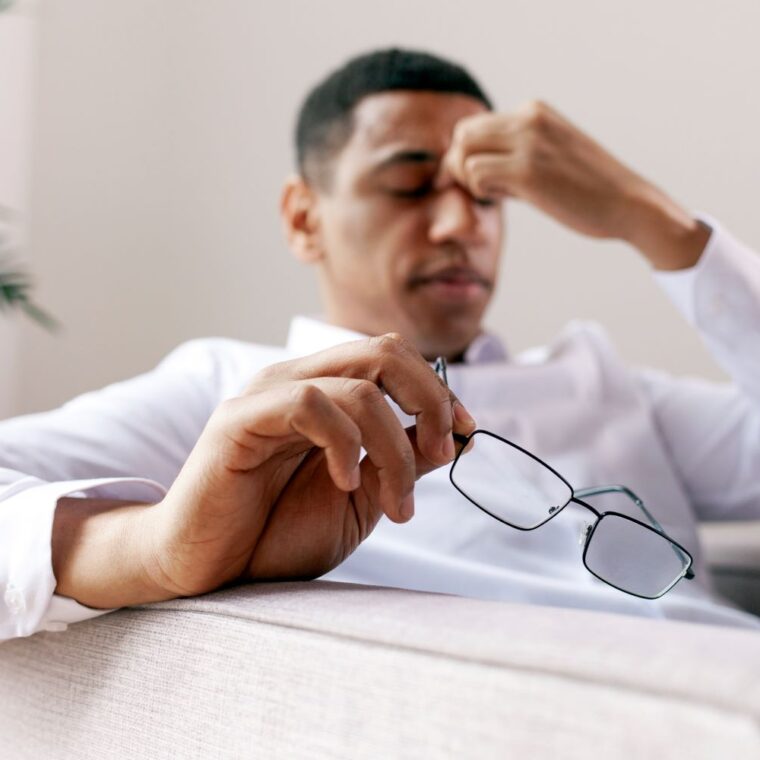What is dry eye?
Dry Eye Syndrome occurs when your eyes don’t make enough tears or the tears don’t function correctly. This can lead to discomfort and even vision issues. Let’s break down the causes, symptoms, and treatments to help you understand how to manage dry eyes effectively.
Causes of Dry Eye Syndrome
- Decreased Tear Production:
- Aging: Tear production naturally declines with age, particularly in people over 50.
- Medications: Certain drugs, including antihistamines, antidepressants, and some blood pressure medications, can reduce tear production.
- Increased Tear Evaporation:
- Environmental Factors: Exposure to wind, dry air, and smoke can speed up the evaporation of tears.
- Screen Use: Extended use of computers, tablets, and smartphones can decrease the blink rate, leading to faster tear evaporation.
- Meibomian Gland Dysfunction: These glands in the eyelids produce the oily layer of the tear film. Dysfunction or inflammation can lead to rapid evaporation of tears.
- Imbalance in Tear Composition:
- Blepharitis: Inflammation of the eyelid margins can disrupt the normal tear film.
- Tear Film Disorders: Issues with the composition of tears, including deficiencies in the mucous or oily components, can lead to inadequate lubrication.
- Other Factors:
- Hormonal Changes: Hormonal fluctuations during menopause, pregnancy, or due to birth control use can affect tear production.
- Contact Lens Use: Improper fit or extended wear of contact lenses can contribute to dry eye symptoms.
Treatment Options for Dry Eye Syndrome
- Artificial Tears:
Over-the-counter lubricating eye drops or gels can supplement your natural tear production, providing relief from dryness. - Prescription Medications:
- Anti-inflammatory Drops: These reduce inflammation in the eyes, which can contribute to dry eye symptoms. (Use only as directed by your doctor.)
- Steroid Drops: Used short-term to treat more severe inflammation, but long-term use should be avoided due to potential side effects. (Consult your doctor for guidance.
- Punctal Plugs: Small medical devices inserted into the tear ducts to block drainage and keep tears on the eye’s surface longer.
- Warm Compresses and Lid Hygiene:
Warm compresses can help open up blocked meibomian glands, improving the oily layer of your tears. Keeping your eyelids clean can reduce inflammation that may worsen dry eyes. - Lifestyle Changes:
- Humidifiers: Adding moisture to the air helps prevent tear evaporation, especially in dry climates or air-conditioned environments.
- Protective Eyewear: Wearing sunglasses or wraparound glasses helps protect your eyes from wind, dust, and dry conditions.
- Screen Breaks: Taking regular breaks from screens reduces eye strain and increases blinking, which helps prevent tear evaporation.
- Dietary Adjustments:
Eating more omega-3 fatty acids (found in fish oil or flaxseed oil) has been shown to improve the quality of tears, helping to reduce dry eye symptoms. - Surgical Options:
For severe cases, surgical treatments such as cauterizing the tear ducts may be considered to reduce tear drainage and keep the eyes moist for longer.
Protect Your Vision and Comfort
Dry Eye Syndrome can be uncomfortable, but understanding the causes and knowing how to manage the symptoms can make a big difference. Whether it’s using artificial tears, making small lifestyle adjustments, or seeking medical treatment, relief is possible. If you’re struggling with dry eyes, don’t hesitate to consult an eye care professional for personalized advice.



